commentary Commentary
Commentary: A decade of climate change has had devastating impact. But there’s hope yet
In just a few short years we have gone from thinking of climate change as a scientific concept to acknowledging it as an existential threat. This shift means there’s hope, says NTU climate scientist Benjamin Horton.
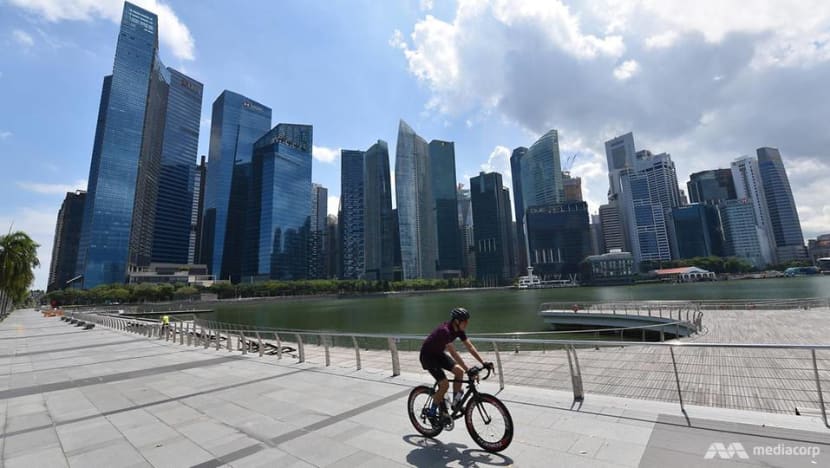
A cyclist rides along the Marina Bay Waterfront Promenade, Apr 29, 2020. (Photo: Jeremy Long)
SINGAPORE: 2020 may go down in history as the year of the coronavirus, but it’s also seen some of the most tragic natural disasters.
In January, Jakarta was in a state of panic, as some of the heaviest rains on record left 60 dead and a further 170,000 people homeless.
Authorities were resorting to the unreliable geoengineering technique of cloud seeding to try to stop more rain falling.
READ: Commentary: Jakarta, the fastest sinking city in the world faces the biggest flooding challenge
READ: As yearly floods loom, Jakarta residents fear shelters are potential COVID-19 ‘breeding grounds’
Meanwhile in Australia, thousands of people fled from towns at risk of being engulfed by wildfires. It was the largest peacetime evacuation in the country’s history.
Record-breaking temperatures, extended drought and strong winds converged to create tragic fire conditions, which have caused 445 deaths due to smoke inhalation, the destruction of thousands of homes and of millions of acres – with nearly 3 billion animals killed or displaced.
It was one of the worst fire seasons on record, with more than 15,000 bushfires across every Australian state.
READ: Forget a ‘new normal’: Experts say Australia’s worst bushfires still lie ahead
The 2020 Atlantic hurricane season has also broken records. It has surpassed 2005 as one with the most named storms on record: 29. This is just the second time that the official alphabetical list of hurricane names has been used up, meaning forecasters have had to move to the supplementary list of Greek letter names.
Here in Southeast Asia, Typhoon Vamco killed at least 67 people in the Philippines in November, making it the country’s deadliest storm of the year.
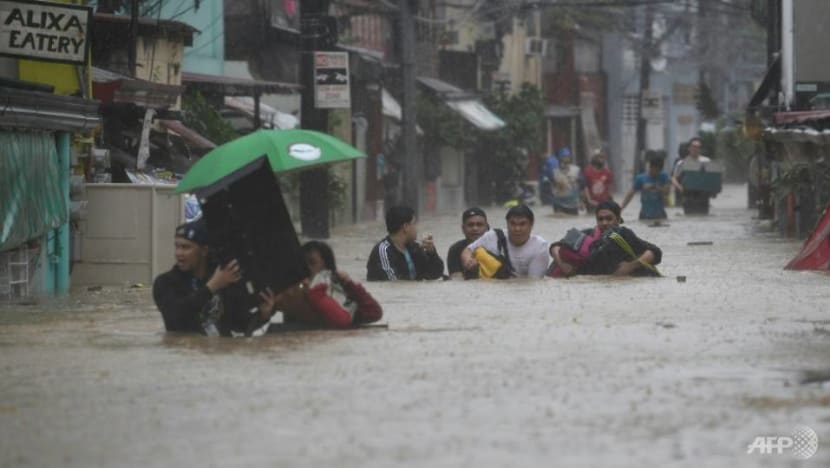
It then barrelled into Vietnam, the latest in a series of storms that have ravaged the country. At least 192 people have died in Vietnam from natural disasters over the past two months, with hundreds of thousands more displaced.
The world’s 10 costliest weather disasters of 2020 also saw insured damages worth US$150 billion, topping the figure for 2019.
DISASTERS COMPOUNDED BY CLIMATE CHANGE AND HUMAN ACTION
Climate change, fuelled by greenhouse gas emissions from energy use and industrial processes, has increased global surface temperatures, producing more droughts and increased intensity of storms.
As more water vapour evaporates into the atmosphere, it becomes fuel for more powerful storms to develop. Rising sea levels expose higher locations not usually at mercy to the ocean and its erosive forces of waves and currents.
Though these events are called natural disasters, the toll they take comes in part from human actions. The build-up of communities in vulnerable areas puts more people in harm’s way.
The warning signs of climate change has been clear over the last decade, with each new emergency topping its precedent.
READ: Commentary: Rising temperatures, fires and floods highlight importance of understanding weather extremes
READ: Commentary: We can no longer ignore the health risks of climate change in Asia
WARNING SIGNS CLEAR IN SINGAPORE TOO
While Singapore has been spared from disaster, the signs are obvious here too.
2019 was Singapore's joint hottest year (with 2016) on record, at about 1 degree Celsius above pre-industrial temperatures of the 1880s. 2010 to 2019 was the hottest decade ever.
This is consistent with global temperature patterns. 2019 was the Earth’s second-hottest year on record. Worldwide temperatures were only 0.04 degrees Celsius lower than in 2016, the warmest year on record.
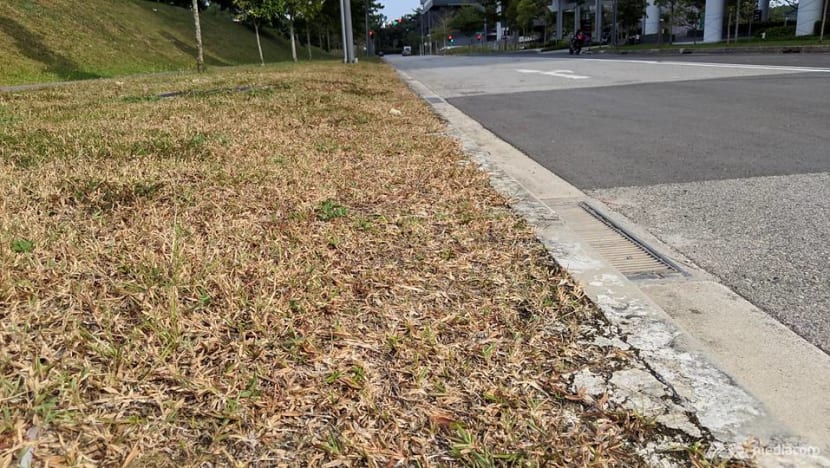
To the man-on-the-street, the increase in average temperatures might not sound like much, but its effects are large. Each little shift increases the likelihood of extreme events, including heatwaves on land and in the ocean, record rainfall and flooding, massive fires and heat-charged tropical cyclones.
Here in Singapore, there is a significant increasing trend in rainfall totals from the 1980s to the present day. From 1980 onwards, rainfall totals increased at approximately 1cm per year.
This year’s June to September monsoon was the wettest season in terms of most rainy days in the last 18 years.
Rainfall events have also become shorter in duration and higher in intensity, leading to greater frequency of urban flash floods. The flash floods caused by intense storms in Singapore are signs of the worsening impacts of climate change.
READ: Commentary: Why that unusually high rainfall in Singapore during the last summer monsoon may be our new normal
READ: Commentary: How prepared is Singapore for the next flash flood?
WHY THE ICE SHEETS TELL A SCARY STORY
These shifts in the overall amount of heat stored in the oceans and atmosphere can have huge effects on the planet, in particular, on glaciers, ice caps and ice sheets.
During this last decade, Arctic sea ice reached its smallest area since record keeping began. Ice sheets in Greenland and Antarctica have also been losing mass, with an acceleration of loss in just the last decade.
Greenland went from dumping only about 51 billion tonnes of ice into the ocean between 1980 and 1990, to losing 286 billion tonnes between 2010 and 2018.
Ice loss leads to rising seas. The rate of global sea level rise has been accelerating. Between 2010 and 2018, sea level rise grew to over 4 mm per year, rising almost 5 cm overall in the past decade.
In 2019, global mean sea level was the highest in the satellite record.
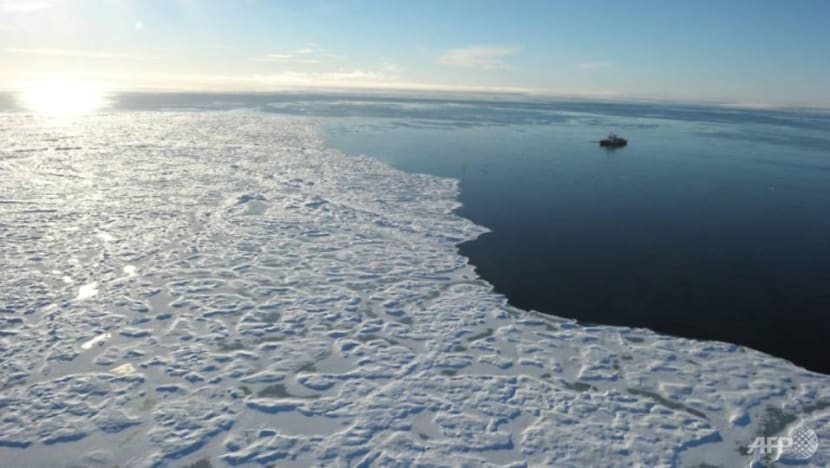
Unfortunately for us, what happens in the Arctic does not stay in the Arctic. As a low-lying island, the rise in sea level poses the most immediate threat to Singapore.
About 30 per cent of our island will be subject to flooding in decades, if we don’t respond to the existential threat of climate change.
READ: Commentary: Save forests or build 4-rooms? It’s not a zero-sum game
WHERE THERE IS HOPE, THERE IS A CHANCE
The underlying force beneath the changes is indisputable.
But there is hope. We have a growing understanding of the causes of climate change and their solutions.
Climate researchers, such as those at the Earth Observatory of Singapore (EOS) at NTU, have been filling in gaps in their data on past and present climates. EOS is using such data to improve models that predict the future.
READ: Commentary: Singapore could be a model for cooler cities in a world heating up
The National Sea Level Programme awarded S$2.7 million to EOS to study past and present sea-level rise. Such funding goes towards strengthening climate science capabilities in Singapore to tackle the potential impact of climate change.
Attitudes across the world toward climate change have shifted in the last decade. Where once there was ignorance, inattention and disbelief about environmental problems, now there is concern.
The recent groundswell of citizen action is unprecedented, with millions around the world taking to the streets, engaging in climate action and demanding greater action from decision-makers.

A 2019 survey of Singaporeans found that over 90 per cent of Singapore residents are aware of climate change and its impact. Close to 80 per cent are prepared to do more to fight climate change, and are willing to bear extra costs or inconveniences to do so.
POLITICAL ACTION IN FULL SWING
There has been a political reaction to climate change over the last decade too. In 2015, the Paris Climate Agreement was signed by 195 countries in an ambitious attempt to prevent global temperatures rising 2 degrees Celsius from pre-industrial levels, and therefore avoid the worst climate impacts.
China, EU, Japan, and South Korea – and now the US too, with Joe Biden’s election – have pledged to reach net-zero greenhouse gas emissions by mid-century. These countries form two-thirds of the world economy and account for over 50 per cent of global emissions.
This puts the Paris Agreement's 2 degrees Celsius limit within striking distance. We could prevent small island states from sinking, avert the disasters of extreme weather for millions, and limit the chance of ice-free Arctic summers.
READ: Commentary: Joe Biden takes office in pivotal moment for climate action. Can he deliver?
READ: Commentary: Five years since Paris Agreement, world must get ambitious on climate action
Here in Singapore, the government has pledged to stabilise emissions by around 2030.
Business and industry have responded. The growth of renewables has far exceeded expectations. The price of solar energy has dropped 81 per cent since 2009.
This has far-reaching implications for humanity’s transition from the age of hydrocarbons to the age of electrification. By 2017, the majority of new power-generating capacity added worldwide came from renewables.
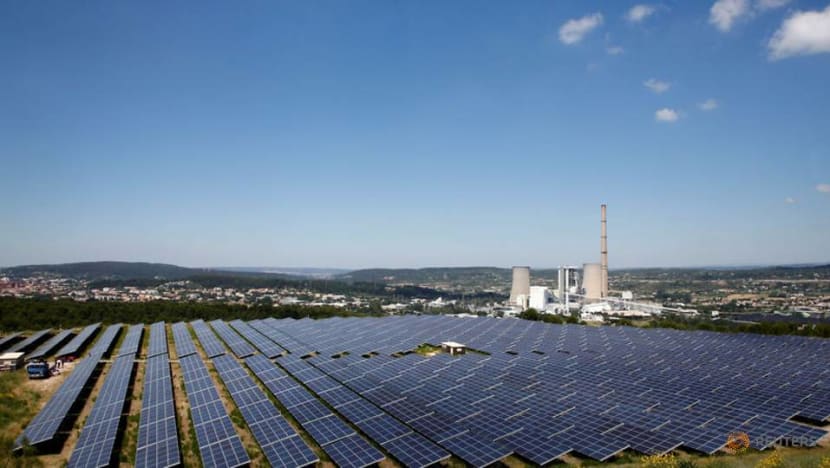
In the reinsurance industry, AXIS said in 2019 it would no longer provide insurance or facultative reinsurance for new thermal coal or tar sands extraction, nor for pipeline projects and their dedicated infrastructure.
While these examples and others show remarkable progress in the last decade, our climate system is showing us we aren’t acting quickly enough. We can't stop climate change because it's already here, but it is not too late to reverse many of its catastrophic effects.
Policymakers, scientists, and the thinking public now have to find solutions – be they engineering, financial, or institutional – to make sure we don’t wake up one day and find out it is much too late to save what we love and cherish.
Listen to the author break down how climate change is destabilising oceans, and what that means for us:
Professor Benjamin Horton is Director of the Earth Observatory of Singapore and a professor at the Asian School of the Environment in Nanyang Technological University.












